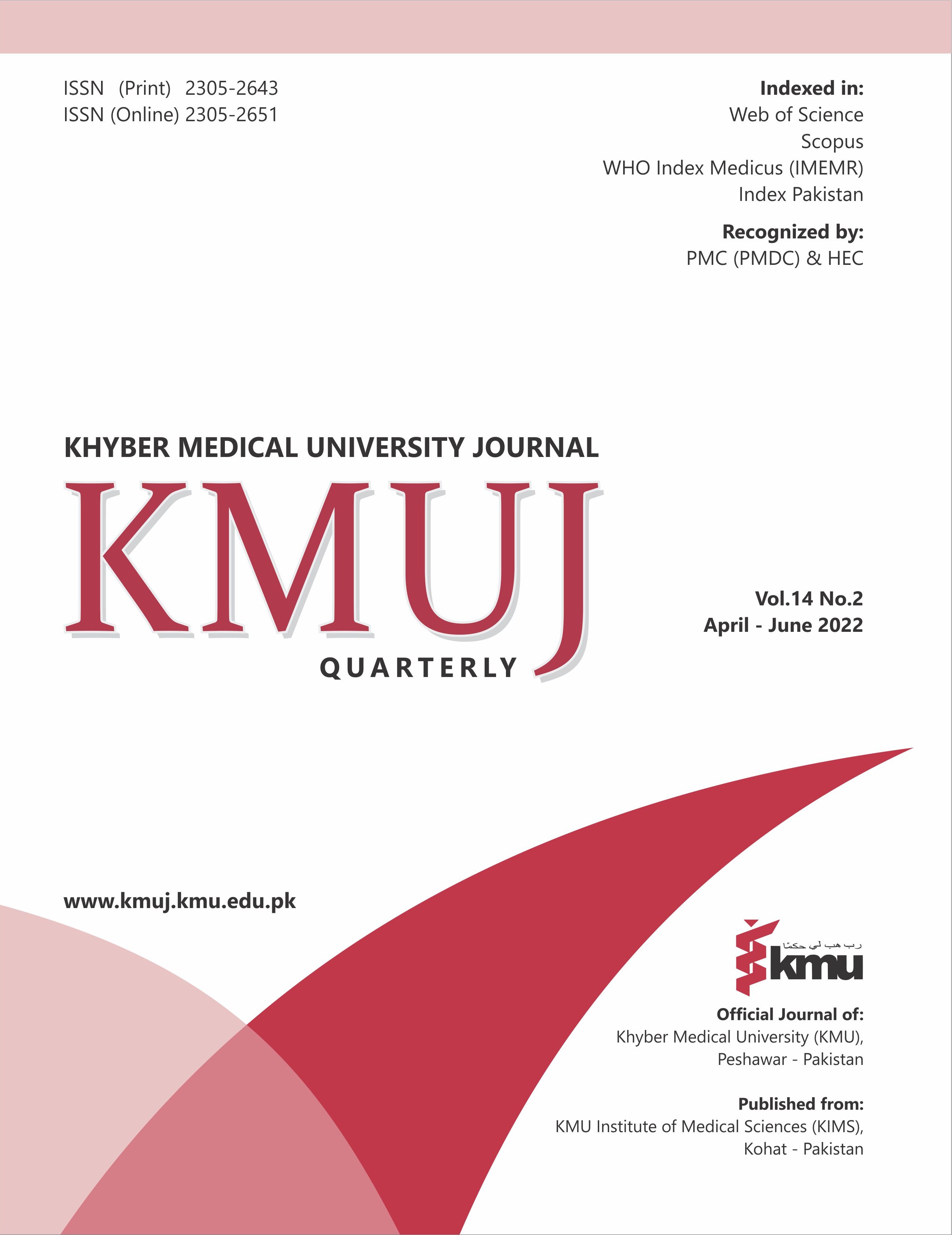ATTRIBUTES OF ROLE MODELLING DEMONSTRATED BY CLINICAL TRAINERS
Main Article Content
Abstract
OBJECTIVE: To determine the frequency of attributes of role modelling demonstrated by clinical trainers in teaching hospitals.
METHODS: A pre-validated role model apperception tool (RoMAT) was used in this cross-sectional study to collect responses from trainees serving in seven teaching hospitals of Pakistan from January to December 2019. The questionnaire contained items on personal, teaching, and clinical attributes of role models. Responders were asked to recognize and respond to attributes of their identified clinical trainers on four-point Likert scale (strongly disagree to strongly agree). Descriptive statistics was carried out using SPSS 21.
RESULTS: Out of the 900 questionnaires distributed; 740 post graduate trainees responded (response rate 82%); 540 (73%) recognized one role model, 185 (25%) identified two role models and the rest 15 (2%) did not identify any clinical trainer as a role model. Common attributes of trainers included: excellent clinical reasoning skills (97%), honesty and integrity (90%), awareness of role model status (86%), professionally competent (80%), communication skills (78%), positive interaction (84%), positive attitude (82%), making learning exciting (81%), understanding learners’ needs (73%), demonstrating enthusiasm (86%), easy to work with (85%), leadership qualities (72%). Less common attributes included empathy (38%), patience (36%) and rapport with students (33%).
CONCLUSION: Trainers in teaching hospitals has to improve their less common characteristics which include empathy, patience and rapport with students.
Article Details
Work published in KMUJ is licensed under a
Creative Commons Attribution 4.0 License
Authors are permitted and encouraged to post their work online (e.g., in institutional repositories or on their website) prior to and during the submission process, as it can lead to productive exchanges, as well as earlier and greater citation of published work.
(e.g., in institutional repositories or on their website) prior to and during the submission process, as it can lead to productive exchanges, as well as earlier and greater citation of published work.
References
Côté L, Leclère H. How clinical teachers perceive the doctor–patient relationship and themselves as role models. Acad Med 2000;75:1117-24. https://doi.org/10.1097/00001888-200011000-00020
Passi V, Johnson N. The hidden process of positive doctor rolemodelling. Med Teach 2016;38(7):700-7. https://doi.org/10.3109/0142159x.2015.1087482
Jochemsen-van der Leeuw HGAR, Dijk N, Etten-Jamaludin FS, Wieringa-de Waard M. The Attributes of the Clinical Trainer as a Role Model: A Systematic Review. Acad Med 2013;88(1):28-34. https://doi.org/10.1097/acm.0b013e318276d070
Jochemsen-van der Leeuw HGAR, Wieringa-de Waard M, Dijk N. Feedback on role model behaviour: effective for clinical trainers? Perspect Med Educ 2015;4(3):153-7. https://doi.org/10.1007/s40037-015-0184-x
Wright SM, Carrese JA. Excellence in role modelling: Insight and perspectives from the pro. Canadian Med Assoc J (CMAJ) 2002;167(7):638-43.
Wright SM, Kern DE, Kolodner K, Howard DM, Brancati FL. Attributes of excellent attending-physician role models. N Engl J Med 1998;339(27):1986-93. https://doi.org/10.1056/nejm199812313392706
Skeff KM, Stratos GA, Berman J, Bergen MR. Improving clinical teaching. Evaluation of a national dissemination program. Arch Intern Med 1992;152(6):1156-61. https://doi.org/10.1001/archinte.152.6.1156
Jochemsen-van der Leeuw HGAR, Dijk N, Wieringa-de Waard M. Assessment of the Clinical Trainer as a Role Model: A Role Model Apperception Tool (RoMAT). Acad Med 2014;89(4):671-7. https://doi.org/10.1097/acm.0000000000000169
Lombarts KMJMH, Heineman MJ, Arah OA. Good Clinical Teachers Likely to be Specialist Role Models: Results from a Multicenter Cross-Sectional Survey. PLoS One 2010;5(12):e15202. https://doi.org/10.1371/journal.pone.0015202
Yazigi A, Nasr M, Sleilaty G, Nemr E. Clinical teachers as role models: Perceptions of interns and residents in a Lebanese medical school. Med Educ 2006;40(7):654-61. https://doi.org/10.1111/j.1365-2929.2006.02502.x
Fromme HB, Bhansali P, Singhal G, Yudkowsky R, Humphrey H, Harris I. The qualities and skills of exemplary pediatric hospitalist educators: A qualitative study. Acad Med 2010;85(12):1905-13. https://doi.org/10.1097/acm.0b013e3181fa3560
Wyber R, Egan T. For better or worse: Role models for New Zealand house officers. N Z Med J 2007;120(1253):(U)2518.
Elzubier MA, Rizk DE. Identifying characteristics that students, interns and residents look for in their role models. Med Educ 2001;35(3):272-7. https://doi.org/10.1046/j.1365-2923.2001.00870.x
Weissmann PF, Branch WT, Gracey CF, Haidet P, Frankel RM. Role modeling humanistic behavior: Learning bedside manner from the experts. Acad Med 2006;81(7):661-7. https://doi.org/10.1097/01.acm.0000232423.81299.fe
Beaudoin C, Maheux B, Côté L, Marchais JED, Jean P, Berkson L. Clinical teachers as humanistic caregivers and educators: perceptions of senior clerks and second-year residents. Canadian Med Assoc J (CMAJ) 1998;159(7):765-9.
Saris WE, Revilla M, Krosnick JA, Shaeffer EM. Comparing questions with agree/disagree response options to questions with item-specific response options. Surv Res Methods 2010;4(1):61-79.
Streiner DL, Norman GR, Streiner DL, Cairney J. Health Measurement Scales, a Practical Guide to Their Development and Use. Reliability 5th ed. New York: Oxford University Press; 2015. p. 159-96.
Said M, Jochemsen-van der Leeuw RHGA, Spek B, Brand PLP, Dijk N. Role modelling in the training of hospital-basedmedical specialists: a validation study of the Role Model Apperception Tool (RoMAT). Perspect Med Educ 2019;8(4):237-45. https://doi.org/10.1007/s40037-019-00527-6
